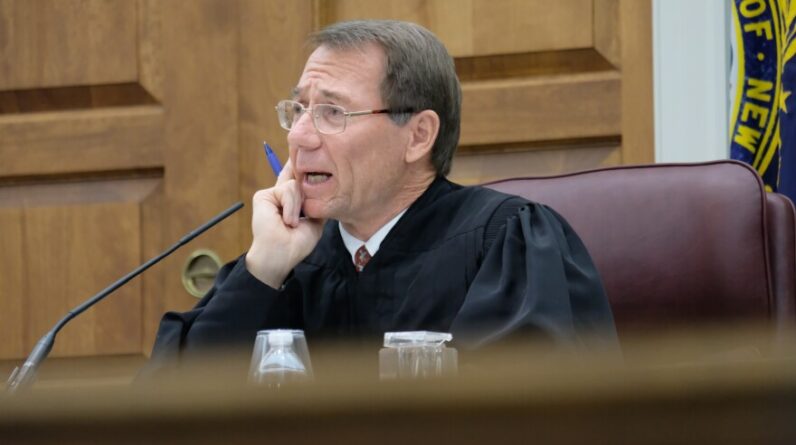
Every 10 years after the census, the New Hampshire legislature redraws the state’s political districts. So when the Republicans captured the majority in the 2020 election, it was no secret that they would draw the new maps in their favor.
But how far the party went is now before the state Supreme Court.
“These maps represent a systematic, intentional and deliberate effort to lock a group of party voters out of the political process,” Jonathan Hawley, an attorney representing a group of Democratic voters, told the justices during oral arguments Thursday.
The legislature, represented in the case by the New Hampshire attorney general’s office, countered that the state constitution puts the power to draw maps squarely in the hands of lawmakers and that political considerations are perfectly acceptable, even if it tilts districts in one direction or another. .
“There is no bright line here that entitles you to a certain level of competitiveness,” Attorney General Anthony Galdieri told the court.
The lawsuit focuses on the state’s 24 Senate districts and five Executive Council districts, new maps of which were signed into law by Gov. Chris Sununu after he swept the Republican-controlled House and Senate last year past
Democrats contend that the maps were so rigged that, despite Democratic candidates receiving more total votes statewide, the GOP won a 14-10 majority in the Senate and a 4-1 majority in the Council.
Essentially, Hawley said, the GOP has entrenched itself in power.
Judge James Bassett during oral arguments
“Elections conducted under partisan gerrymander maps are not free, because election results are predetermined,” he told the court. “And they are not equal, because not all voters have the same opportunity to choose their representatives.”
The question before the justices in this case is twofold: What role, if any, should the court play in map review? And if there is a role, what exactly would it be?
“Is your position that partisan considerations are part of the process and are acceptable? Do they ever go too far?” Judge James Bassett asked Hawley during arguments.
Hawley responded, “Yes, and where that line is is where this court says it is. It’s when maps systematically devalue and dilute the voting power of certain New Hampshire voters.”
In this case, it’s Democratic voters, who now face a decade of coastal electoral battles under the current maps.
But from the Legislature’s perspective, the district maps are theirs and theirs alone to draw, with minor rules to follow. Those rules, laid out in the state constitution, are that districts must have basically the same population and that lines cannot be drawn through cities or city neighborhoods.
Galdieri said, with no direction from the framers of the constitution on what political fairness should look like on maps, how could the courts be expected to sort it out? Should all 24 Senate races be competitive, Galdieri asked, or should the overall balance of power be up for grabs?
With no clear answer to that, and because the U.S. Supreme Court has issued previous rulings that political considerations are legal in map drawing, he said it’s best for the court to wash its hands of the matter.
“Redistricting goes to the core of the legislative function. It is putting the Legislature in charge of its districts,” he said.
Other states, faced with the same questions about who can draw the maps, and whether they should be fair, have turned to outside experts or independent commissions to draw maps.
Galdieri said New Hampshire lawmakers are free to pass a bill to do so, if they want to reform their own procedures. This prompted a response from Judge Bassett: “The problem here is that you have a circular problem once you have an entrenched group, they are not going to give up power, and so to say the solution is at the ballot box ignores that reality. “
And the reality is that no political party is likely to pass a law that limits its own ability to win elections.
[ad_2]
Source link





